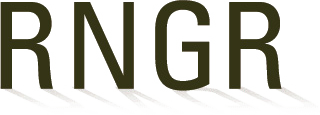
Andropogon (scoparius)
|
Jan Schultz Forest Plant Ecologist USDA FS - Hiawatha National Forest 1030 Wright Street Marquette, Michigan 49855 906.228.8491 906.228.4484 (fax) jschultz@fs.fed.us http://plant-materials.nrcs.usda.gov/copmc/ |
|
| Family Scientific Name: | Gramineae | ||
|---|---|---|---|
| Family Common Name: | Grass Family | ||
| Scientific Name: | Andropogon scoparius Michaux | ||
| Common Synonym: | Schizachyrium scoparium (Michaux) Nash | ||
| Common Name: | Little bluestem | ||
| Species Code: | ANSC10 | ||
| General Distribution: | Characteristic prairie species, jack pine plains, sand dunes, shores, dolomitic pavements, spreading along roadsides/ railroads, old sandy fields. Grass, clumping up to 3 feet in height. | ||
| Propagation Goal: | plants | ||
| Propagation Method: | seed | ||
| ProductType: | Container (plug) | ||
| Time To Grow: | 0 | ||
| Propagule Collection: | The very small seed is collected by hand from locally native plants within the eastern central Upper Peninsula. Flowers from August-Sept. The seed is an achene and is harvested Sept. and Oct. | ||
| Propagule Processing: | Dry seeds for 1-2 weeks in open paper bags or open Rubbermaid-style bins, turning or shaking the seed heads. Seed is not cleaned. Once seeds have dried, store in sealed Ziploc-style bags or Rubbermaid-style bins. Keep in a cool dry place (refrigerator or cold garage). Cold store until planted (up to 3 years). | ||
| Pre-Planting Treatments: | None | ||
| Growing Area Preparation/ Annual Practices for Perennial Crops: |
Propagation Environment: Greenhouse film is made of Standard U.V. 3HL Clear 6mil (J.R. Johnson's Greenhouse Supply Inc.). Fans run continuously to circulate the air. Vents open during the summer months for cooling. Container Type: grows best in deep cell plug trays; 100 cell (1.5" diameter), 18"x12"x6.5" deep. Little Bluestem also grows successfully in a variety of other plug cell sizes and shapes. Growing Media: Scotts Redi-earth Plug and Seedling Mix. Contains vermiculite, and sphagnum peat moss. Soil is sterile. Thoroughly moisten the soil with water, mixing in the water with a trowel. Cover the holes in the bottom/sides of the plug tray cells with paper. Fill cells with damp soil and press soil down with a spoon. Refill the cell plugs with soil to the top, this time not pressing it down. Water the soil in the plug cells again. Sow theseeds by hand at a rate of about 3 seeds in each small cell and 5 seeds in each large cell. Cover the seeds with a thin layer of soil or gently press the seeds into the dirt. Sow January until June as needed. |
||
| Establishment Phase: | From Jan. until Aug. the greenhouse is set at 65 degrees F both day and night. Ambient greenhouse temperatures may reach 100 degrees F during the day in the summer. From Sept. thru Dec. the thermostat is set at 55 degrees F. During this season ambient greenhouse temperatures may reach 75 degrees F during the day. The greenhouse holds plants at all stages of growth so the temperature setting stays the same for all plants at all stages of growth. Soil is kept consistently damp during germination. Water using a fine mist or light hose setting only. Newly planted trays are placed on the south side of the greenhouse. No artificial light is used. | ||
| Active Growth Phase: | The soil does not need to be consistently moist. Move trays to cooler north greenhouse tables. No fertilizers are used. | ||
| Hardening Phase: | In early-late spring, mature plants can be moved into a cold frame with a cover of material that diffuses sunlight to prevent scorching of the plants. When danger of frost has passed leave plants outside. Water less frequently. | ||
| Harvesting, Storage and Shipping: | In the Upper Peninsula flats are planted from late May to early October. Flats that are not planted in the summer remain in the greenhouse for another season. | ||
| Other Comments: | As with other warm season grasses initial establishment on the site is slow. Usually has a high germination rate and overall success rate. Best germination if seed is fall planted on restoration site. | ||
Citation:
Schultz, Jan; Beyer, Patty; Williams, Julie. 2001. Propagation protocol for production of Container (plug) Andropogon scoparius Michaux plants USDA FS - Hiawatha National Forest Marquette, Michigan. In: Native Plant Network. URL: https://NativePlantNetwork.org (accessed 2025/10/16). US Department of Agriculture, Forest Service, National Center for Reforestation, Nurseries, and Genetic Resources.



